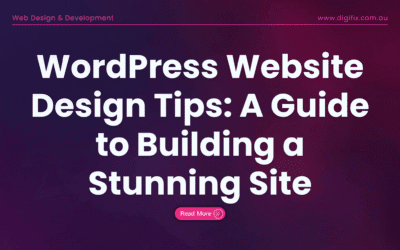Introduction
In this twenty-first century, every company needs to have a website because it is their second identity. Even the most loyal customers search for a company on the website to see how good their product or the service is. A website helps a company in multiple ways to achieve lots of benefits and overall goals. A well-structured website that contains all the information that a customer is looking for helps to set a good impression and increase customer relations. Moreover, not having a website means customers trust you less. Nowadays, websites have become one of the most influential factors in a purchase decision. People search on websites first and then make a purchase. There are some main elements of a good website that customers usually look for such as credentials, reviews, and awards given by other people.
With the high competition and websites becoming a normal or a standard platform of a business, just having a website has become not enough. You have to have a well-structured website that creates a good first impression, ensures customer satisfaction and ultimately improves your opportunity to enhance the business. After creating good relations with customers, it will enhance usability and credibility. Overall a good website will improve the company’s brand trust which will be the company’s biggest goodwill. It helps to stay and compete with other companies and to maintain consistency as well. A proper Web design can increase conversions by drawing attention to new products, special offers, or calls-to-action.
In this article, we are going to discuss in detail the main elements of a good website and how to measure the success of a website.
What Makes a Good Website?
A good website entirely depends on how web design is done. We are living in an era where people seek immediate information about what they need, and your website offers all the answers they are looking for and even more and through this, we can define if it is good or not. In simple words, good websites have to be attractive, easy to look at and simple to use. A good thing about having a website is that it helps you to operate globally and not limit you geographically.
A good website needs professional expertise in different areas. Here’s a list of elements and features that are essential for a good website.
- A website should be simple and easy to use
People don’t like to spend too much time and effort on your website. If the navigation of your website is complicated and people can’t find what they are looking for, there is a very high chance that they will leave your site within seconds. People of different ages, different backgrounds and different education levels visit your website. Therefore, you should make sure that your website content and structure can be easily understood by any of them. Adding a clear navigation bar, strong call to actions and a search bar are some of the things that you can do to make it easy for your website visitors.
ARE YOU LOOKING FOR A CONVERSION DRIVEN WEBSITE?
- Be consistent
Consistency is a very important thing when it comes to a good website design. Your brand personality is expressed via your website. Therefore, the colors used in your website design, fonts, different elements, and tone should align with your brand personality. Having a proper plan addressing all these things will help you to maintain consistency throughout, even when you are doing changes to the website in the future.
- Accessibility from anywhere and anytime
No matter how good your website is, if people cannot access it whenever they want, it is a failure. Sometimes websites only support laptops and desktops and do not support other devices such as mobiles and tabs. It has been proven that more than 50% of the global website traffic is coming through mobile phones. Therefore, it is crucial that your website should be optimised for all devices including smartphones and tablets. If a website doesn’t support all screen sizes, the chance is that the company will lose the battle with competitors.
- Using of colors and patterns
Selecting a theme and a colour palette for your website is a very important step in designing a successful website. Each and every colour has a meaning and you have to consider these meanings when selecting your colour palette. You have to make sure these colours help you represent your business and express your brand personality. And also it is very important to identify your target audience and their behavior and make sure the colours and designs appeal to them.
- Proper Navigation
Proper Navigation means visitors will spend more time on the website. For effective navigation, you can create a logical page hierarchy and clickable buttons. The navigation should be designed in such a way that within a few clicks visitors should get their information. The proper headline and sub-headline with information are needed for proper navigation.
- Load time
If your website takes so much time to load, there is a pretty high chance that your visitors will not wait. Most of the visitors expect websites to load within 2-3 seconds. Optimising your website images and videos will help you in reducing load time.
- Fresh, quality content
There are thousands of websites and other online sources out there for people to refer to. You have to make sure your content is unique and add value to your website visitors. Use a writing style that matches your brand and your audience as well. Answer common questions that your target audience has and their pain points through your content.
- A clear and strong call to actions
Call to actions play a vital role in increasing the website engagement and converting visitors to actual consumers. Some of the characteristics of good call to actions are use of power words, simple and clear, highlighted using different fonts, sizes and colours etc.
How to measure success?

No matter how much time, effort and money you invest on your website if you are not continuously monitoring your website performance. You have to make sure you are on track to achieving your goals and KPIs and if there are any deviations, make the required changes.
Sales
One of the main purposes of a company website is to contribute to the overall sales. This can be either through leads generated from the website or direct website sales. You can easily track the sales generated by the website and compare it with your initial KPI.
Number of visitors
One of the key ways to check your website’s success is to look at the number of visitors. Getting people to come to your site is always the first step. An increase in the number of visitors can be a positive indicator of your website performance and a drop in the number of visitors can be a warning that something is not working.
Average time spent by visitors
How long are your customers hanging out on your pages? If the visitors are spending enough time on your website, that means they are actually interested in your products, services or website content. If people are not spending time on your website, that means either your website is poor or you are not attracting the right people.
Bounce rate
Bounce rate refers to the percentage of visitors that enter your website and leave without engaging in any actions. Bounce rate is a good indicator as to whether your landing pages are performing well or not.
If you need any help in designing your website, our expert team at DigiFix is more than happy to help you start your journey.
Do you want more traffic?
—————
Hi, we are an Australian digital agency doing groundbreaking work to help a business like yours reach its full potential. My only question is will you qualify for our services?
Do you want more traffic?
—————
Hi, we are an Australian digital agency doing groundbreaking work to help a business like yours reach its full potential. My only question is will you qualify for our services?





0 Comments